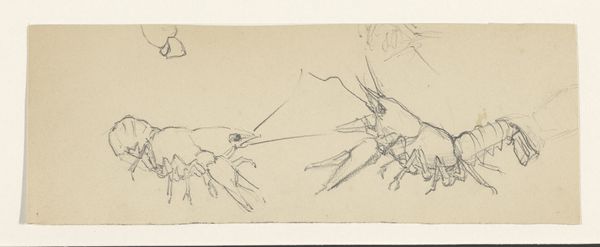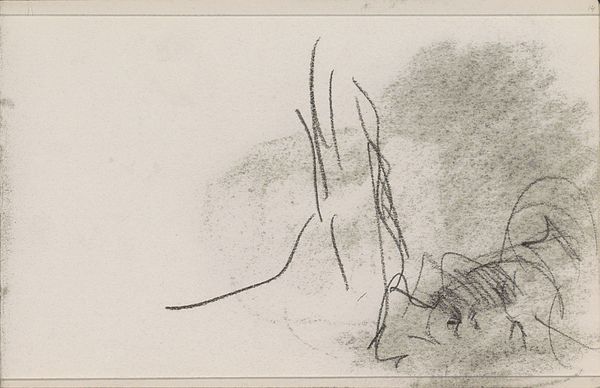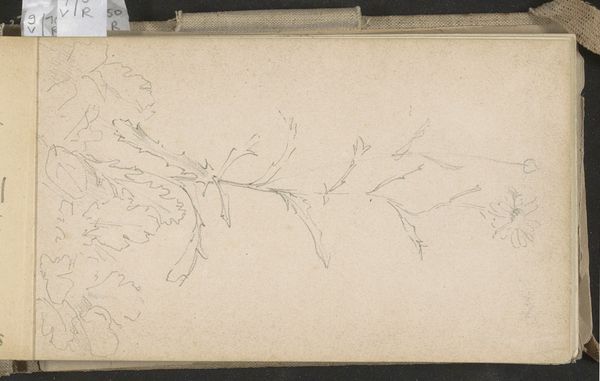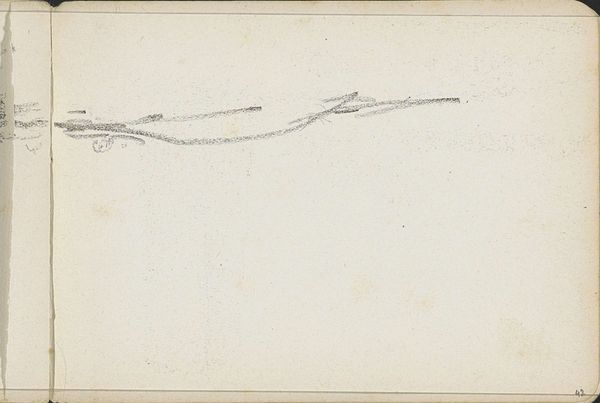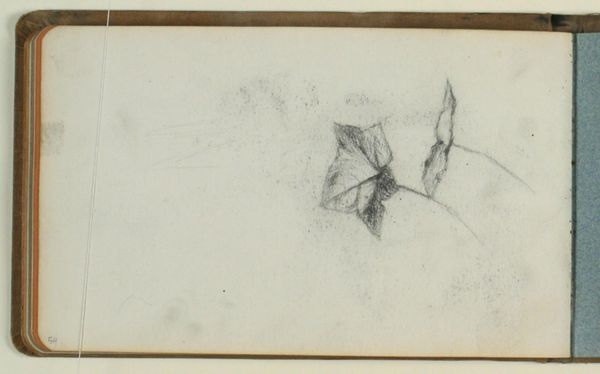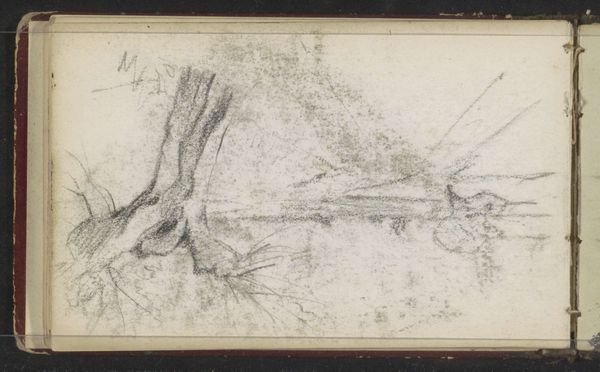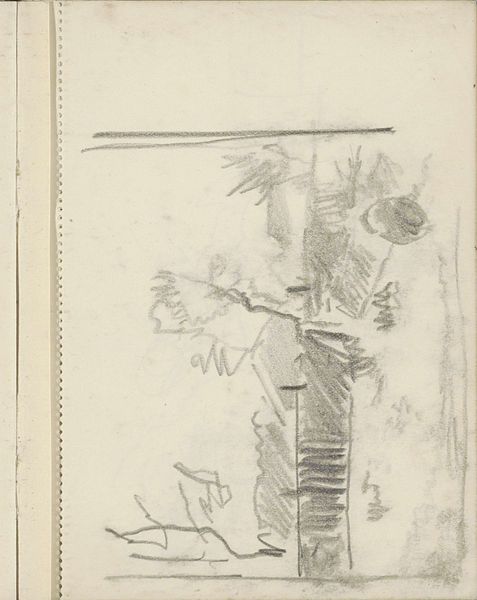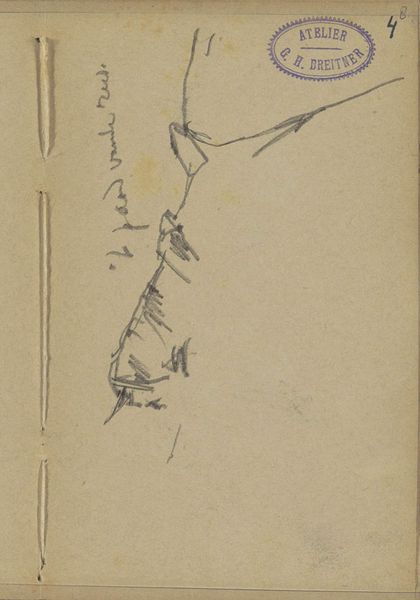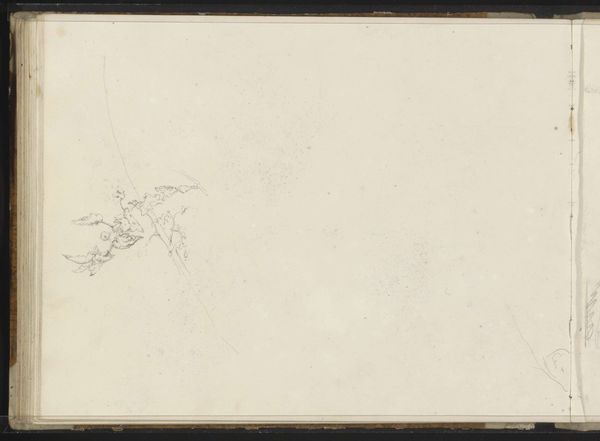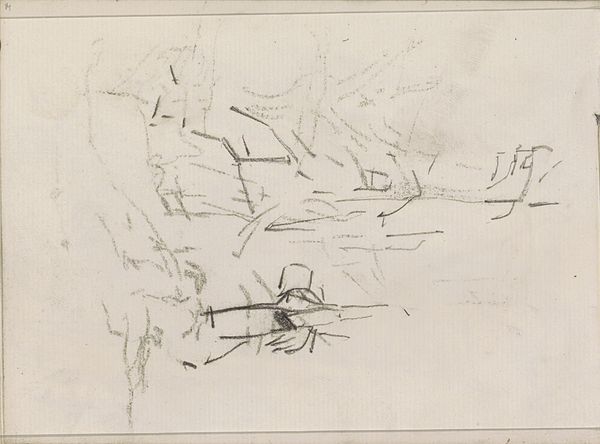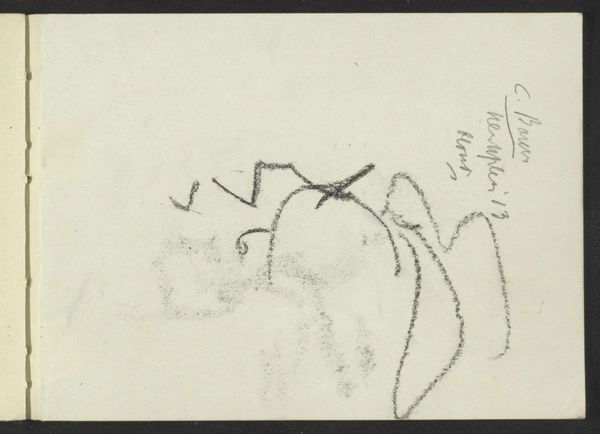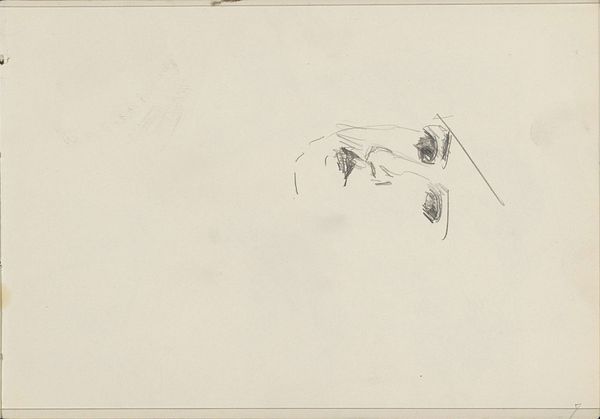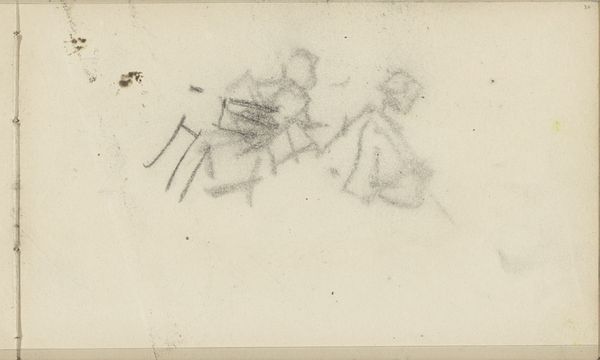
drawing, ink
#
drawing
#
etching
#
german-expressionism
#
ink
#
expressionism
Dimensions: sheet: 9.8 x 19.7 cm (3 7/8 x 7 3/4 in.)
Copyright: National Gallery of Art: CC0 1.0
Editor: Here we have Paul Klee’s 1913 ink drawing, “Leiche,” which translates to "Corpse." There’s a stark simplicity to the lines, a sort of desolate vulnerability. What do you see when you look at this piece? Curator: Desolate is a good word, actually. Klee wasn’t shy about exploring difficult subjects, and death, as you might guess, was something that preoccupied many Expressionist artists. It's tempting to read "Corpse" literally, isn't it? And I see what you mean by desolate... Look closely at those scratchy lines; it almost feels like a landscape stripped bare. Imagine the world war looming; those jagged forms take on a whole new, haunting resonance. Doesn’t it evoke something primal, stripped down to its bare essence? Editor: Definitely. It's like a skeletal remains of something once vibrant, not necessarily literal. Do you think the starkness is intentional? Curator: Absolutely. Expressionists weren't aiming for photorealism. It's about emotion, the inner turmoil, and, honey, sometimes the mess is the message. He's after conveying a mood, and I think those nervous lines really drive home that feeling of unease. Does that resonate with you? Editor: Yes, it does. Seeing it as emotion made visible, rather than a depiction of an object makes a big difference for me. Thanks. Curator: My pleasure! And that's why art history's a hoot – changing perspectives, revealing hidden layers and making things a bit clearer one art piece at a time!
Comments
No comments
Be the first to comment and join the conversation on the ultimate creative platform.
